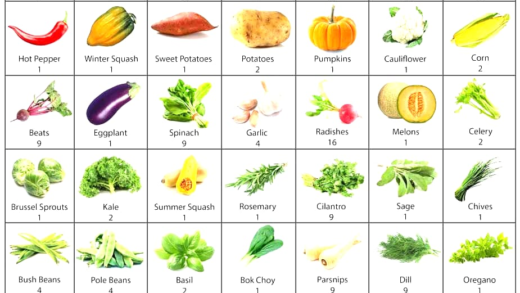Geese exhibit complex mating behaviors, emphasizing lifelong partnerships marked by loyalty and cooperation. They recognize their partners through vocalizations and visual cues, engage in elaborate courtship rituals, and work together to raise goslings. While instances of infidelity can occur, these are exceptions rather than the rule. The emotional bonds between geese are strong, and they can grieve the loss of a mate. Observing geese can teach us valuable lessons about commitment, communication, and adaptability in relationships.
Understanding Geese Mate Selection: How Do Geese Choose Their Lifelong Partners?
Geese mating behavior reveals fascinating insights into how these birds select lifelong partners. The process is influenced by several factors, including genetics, environmental conditions, and social interactions. Typically, young geese begin their search for a mate around their second year of life. During this period, they engage in various activities that help them identify suitable partners.
- Genetics: Genetic compatibility plays a crucial role in mate selection. Geese often prefer partners with similar genetic traits, which can lead to healthier offspring.
- Environment: Availability of resources, such as food and nesting sites, affects mate selection. Geese are more likely to choose partners in environments that provide ample resources.
- Social Behavior: Observing other geese can influence a young goose’s choice. They often mimic the choices of older, successful pairs.
This selection process is vital for ensuring the survival of the species. By choosing compatible partners, geese enhance the chances of successful reproduction and nurturing of their young. As a result, their relationships are often marked by strong bonds that can last a lifetime.
Geese Recognition: How Do Geese Recognize Their Partners Among Others?
Geese possess remarkable abilities to recognize their partners among a crowd. This recognition is primarily based on vocalizations and visual cues. Each goose has a unique voice that helps its mate identify it, even in large flocks.
- Vocal Recognition: The honking sounds made by geese carry specific frequencies that can be recognized by their mates. This vocal identification is crucial during the mating season.
- Visual Cues: Geese also use physical characteristics, such as plumage patterns and body size, to recognize their partners. Familiarity with these traits develops over time.
- Behavioral Patterns: The way a goose moves and interacts can signal its identity. Mates learn each other’s behaviors, which aids in recognition.
This ability to recognize partners is essential for maintaining their strong bonds and ensuring effective communication within their relationships.
Courtship Rituals: What Are the Courtship Behaviors of Geese?
Geese courtship rituals are elaborate and fascinating, showcasing their commitment to forming lifelong bonds. These behaviors often include synchronized movements, vocalizations, and displays of affection.
- Synchronized Swimming: During courtship, pairs often swim together in perfect harmony, displaying their unity and coordination.
- Vocal Duets: Mated pairs often engage in vocal duets, harmonizing their honks to strengthen their bond and communicate with one another.
- Mutual Preening: Preening is a common behavior during courtship, where geese groom each other. This not only helps maintain their feathers but also reinforces their connection.
These courtship rituals are critical in solidifying their bond and ensuring that both partners are committed to raising their young together. The elaborate nature of these behaviors highlights the depth of their relationships.
Exceptions to Lifelong Bonding: Do Geese Ever Change Partners?
Geese mating behavior typically emphasizes lifelong partnerships, but exceptions do exist. In rare cases, geese may change partners due to various circumstances. These include environmental pressures, personal survival strategies, or even the death of a mate. While the ideal scenario involves a lifelong bond, the harsh realities of nature sometimes necessitate change.
- Death of a Mate: If a goose loses its partner, it may seek a new mate to ensure reproductive success.
- Resource Scarcity: In times of food shortages or habitat destruction, geese might abandon their partners in favor of more advantageous conditions.
- Behavioral Issues: Occasionally, behavioral incompatibility can lead to separation, prompting one or both geese to find new partners.
These exceptions highlight that while geese value loyalty, adaptability is vital for survival.
Raising Goslings: How Do Geese Raise Their Young Together?
Geese are dedicated parents, and their approach to raising goslings showcases their strong partnership. Both parents play active roles in nurturing and protecting their young. This cooperative parenting is crucial for the survival of the goslings.
- Nesting: Geese typically build nests close to water sources, ensuring safety and access to food for their young.
- Incubation: Both parents take turns incubating the eggs, ensuring they are kept warm and safe until hatching.
- Protection: Once the goslings hatch, both parents work together to guard them against predators, demonstrating their commitment to family safety.
This collaborative effort enhances the survival rate of the goslings, showcasing the importance of teamwork in their relationships.
Impact of Loss: How Do Geese React to the Death of a Mate?
When a mate dies, the impact on the surviving goose can be profound. Geese often exhibit signs of mourning and distress following the loss of their partner. This emotional response highlights the depth of their bond.
- Isolation: A grieving goose may isolate itself, spending time alone as it processes the loss.
- Searching Behavior: Surviving geese sometimes engage in searching behavior, looking for their lost partner for an extended period.
- Potential for New Bonds: Over time, some geese may eventually seek new mates, although this process can take considerable time as they adjust to their loss.
The emotional resilience of geese, coupled with their strong pair bonds, provides insight into their complex social structures and the depth of their relationships.
Infidelity in Geese: Do Geese Ever Cheat on Their Partners?
Geese mating behavior typically emphasizes lifelong partnerships, leading to a common belief that these birds are entirely faithful to their mates. However, instances of infidelity can occur, albeit rarely. Factors contributing to these situations include environmental stress, resource scarcity, and individual behavioral traits.
- Environmental Stress: In challenging conditions, such as food shortages, some geese may stray in search of better opportunities.
- Resource Scarcity: When resources are limited, geese might take the risk of exploring new pairings to ensure reproductive success.
- Individual Behavior: Some geese may simply have a tendency to engage in mating with multiple partners, deviating from the norm.
While these cases are not the norm, they highlight that even in a species renowned for loyalty, the complexities of survival can lead to unexpected behaviors.
Loyalty in Geese: How Does Loyalty Manifest in Geese Relationships?
Loyalty in geese relationships is profoundly evident through their behaviors and social structures. These birds form strong bonds that can last a lifetime, characterized by mutual support and commitment.
- Cooperative Parenting: Both parents are actively involved in raising their goslings, demonstrating their commitment to family.
- Protection of Each Other: Geese often stand guard over their partners, showcasing their loyalty during nesting and raising young.
- Emotional Bonds: The emotional connection between mated pairs is strong, as seen in their grieving behavior if one partner is lost.
This loyalty not only ensures the survival of their offspring but also enhances the overall stability of their relationships.
Lessons from Geese: What Can We Learn from Geese About Relationships?
The fascinating world of geese offers valuable lessons about relationships that can resonate with human experiences. Their behaviors highlight the importance of commitment, communication, and adaptability.
- Commitment: Geese demonstrate that dedication to a partner is crucial for nurturing strong family bonds.
- Effective Communication: The unique vocalizations and body language of geese underscore the significance of clear communication in maintaining relationships.
- Adaptability: The ability to adapt to changing circumstances, whether through finding new mates or coping with loss, teaches resilience in partnerships.
By observing these remarkable birds, we can glean insights into fostering healthier and more supportive relationships in our own lives.





Comments are closed.